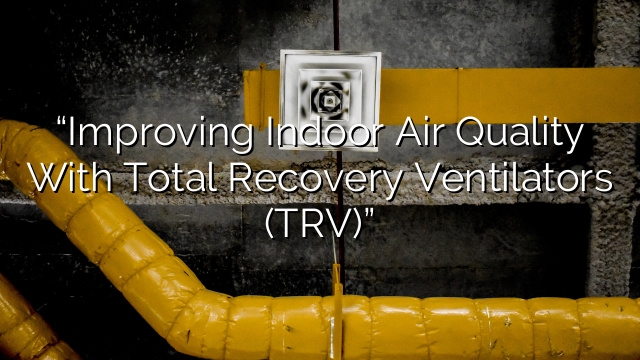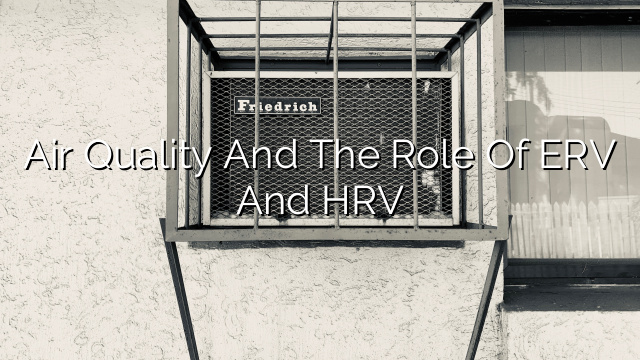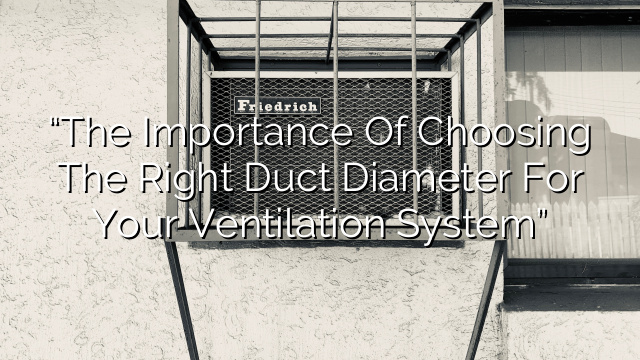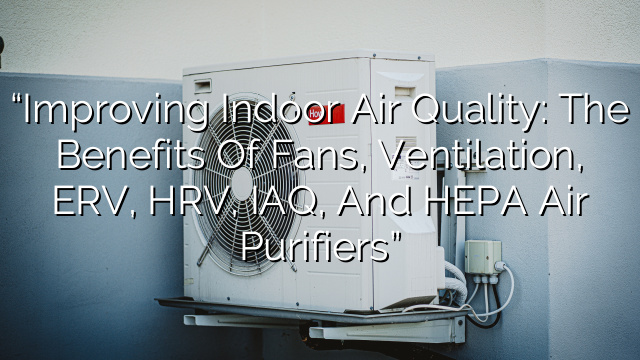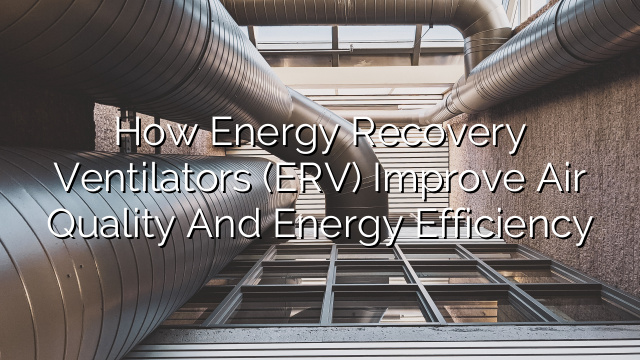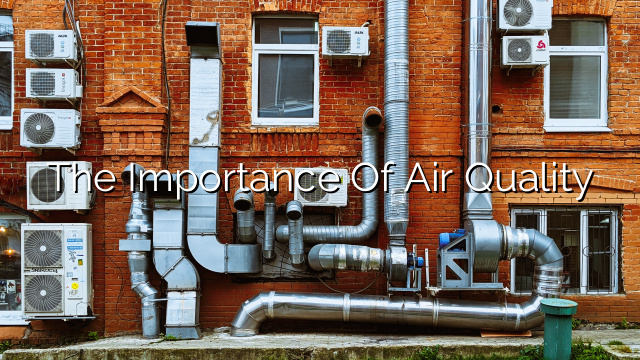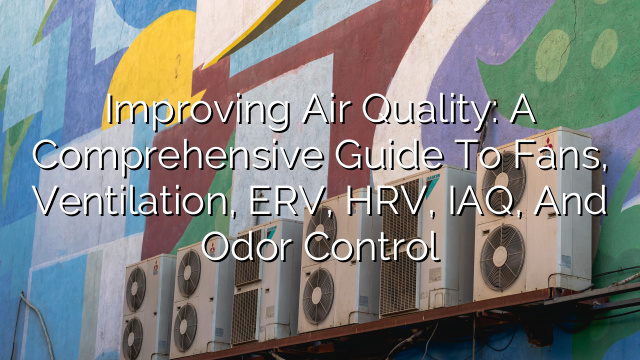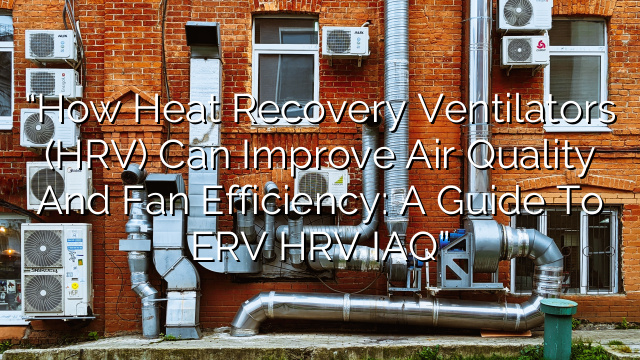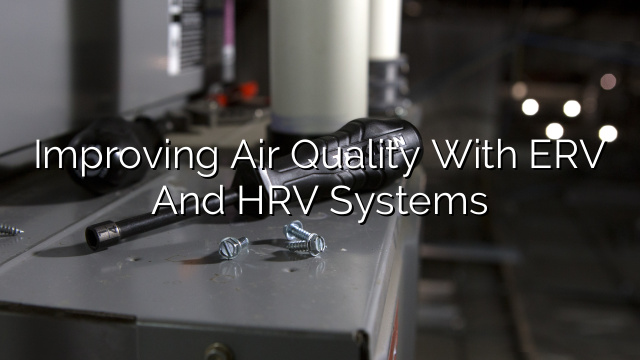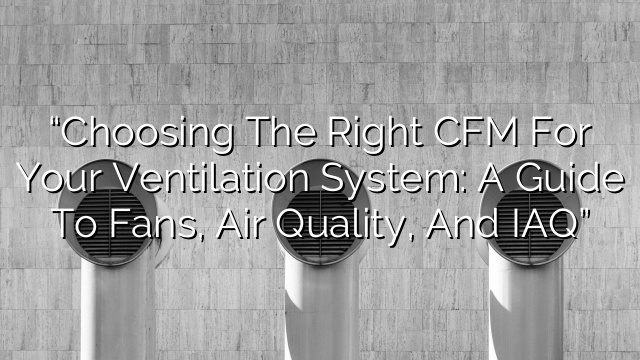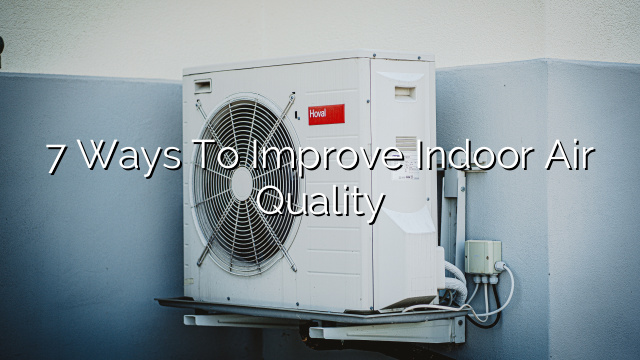The Importance of Indoor Air Quality
When we think about air pollution, we often picture smog-filled skies and car exhaust. However, the truth is that the air inside our homes can be just as polluted, if not more so, than the air outside. According to the Environmental Protection Agency (EPA), indoor air pollutants can be 2-5 times higher than outdoor levels, and in some cases, even up to 100 times higher! These pollutants can have a significant impact on our health and well-being, leading to respiratory problems, allergies, and even more serious conditions such as asthma and lung cancer.
So, what can we do to improve the air quality in our homes? The answer lies in a combination of fans, ventilation, energy recovery ventilation (ERV), heat recovery ventilation (HRV), indoor air quality (IAQ) solutions, and air cleaner filters.
Fans and Ventilation
Proper ventilation plays a crucial role in maintaining good indoor air quality. Ventilation helps to remove stale air and circulate fresh outdoor air throughout your home. One way to achieve this is by using fans. Fans can be installed in various parts of your home, such as the bathroom, kitchen, and living areas, to promote air movement and increase airflow.
Air Quality ERV and HRV
Energy recovery ventilation (ERV) and heat recovery ventilation (HRV) systems are designed to bring fresh outdoor air into your home while simultaneously removing stale indoor air. ERV and HRV systems work by transferring heat and moisture between the incoming and outgoing air streams, helping to maintain comfortable indoor temperatures and humidity levels. These systems can also filter out particulate matter, allergens, and other pollutants, further enhancing indoor air quality.
Indoor Air Quality (IAQ) Solutions
There are several IAQ solutions that can help to remove pollutants from the air and improve indoor air quality. One popular option is an air purifier. Air purifiers use filters and other technologies to trap and remove airborne particles, such as dust, pollen, pet dander, and mold spores. Some air purifiers also have additional features, such as UV-C light or ionizers, which can help to kill germs and neutralize odors.
Another IAQ solution is a whole-house air filtration system. These systems are installed as part of your home’s HVAC system and can filter out particles as small as 0.3 microns in size. This includes common allergens such as dust mites, pollen, and pet dander, as well as larger particles like dust and mold spores.
Air Cleaner Filters
Air cleaner filters are an essential component of both air purifiers and whole-house air filtration systems. These filters trap and remove particles from the air, preventing them from being circulated back into your living spaces. There are several types of air cleaner filters available, including:
- HEPA Filters: HEPA stands for High-Efficiency Particulate Air. These filters are capable of capturing 99.97% of particles that are 0.3 microns or larger. HEPA filters are highly effective at removing common allergens, such as pollen, pet dander, and dust mites.
- Activated Carbon Filters: Activated carbon filters are excellent at trapping odors, gases, and volatile organic compounds (VOCs). These filters work by adsorption, which is the process of attracting and holding molecules onto their surface.
- Electrostatic Filters: Electrostatic filters use an electric charge to attract and trap particles. These filters are washable and reusable, making them a cost-effective option in the long run.
FAQs
- How often should I change my air cleaner filter?
This depends on several factors, including the type of filter you have and the level of pollutants in your home. As a general rule, HEPA filters should be replaced every 6-12 months, while activated carbon filters and electrostatic filters can often be washed and reused. It’s always a good idea to check the manufacturer’s recommendations for your specific filter.
- Can air cleaner filters remove viruses and bacteria?
HEPA filters can capture some viruses and bacteria, but not all. Certain filters, such as UV-C filters, can be effective at killing germs by emitting ultraviolet light that damages their DNA. However, it’s important to note that air filters alone cannot guarantee the elimination of all viruses and bacteria.
- Can I use multiple IAQ solutions in my home?
Absolutely! In fact, using a combination of IAQ solutions can help to optimize indoor air quality. For example, you could use an air purifier in your bedroom for targeted filtration of allergens while also installing a whole-house air filtration system to remove particles throughout your entire home.
- Do fans and ventilation alone improve indoor air quality?
Fans and ventilation are essential for promoting air movement and increasing airflow, but they may not be enough to improve indoor air quality on their own. While fans and ventilation can help to remove some pollutants, they do not filter or purify the air. To achieve optimal indoor air quality, it’s recommended to use a combination of fans, ventilation, ERV/HRV systems, IAQ solutions, and air cleaner filters.



